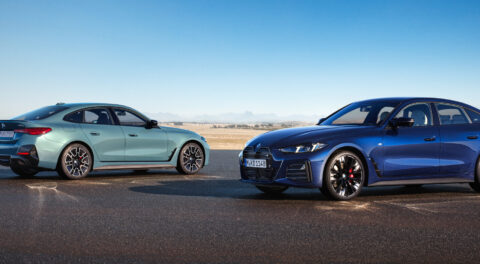
Although the M5 has long established itself as the range-topping performance four-door of the BMW range, sometimes even wearing the crown of the fastest production sedan in the world, it wasn’t the first BMW model to do so. That credit belongs to the Alpina-modified versions of the 5 Series, which really came into their own during a decade long period spanning from the early 1980s until the early 1990s. This was the era of the B7 Turbo S and the B10 BiTurbo, two cars that would help to rewrite the rules of contemporary performance.
The attention wasn’t exclusive to the four-door, either, as the 6 Series, which was initially based on the E12 5 Series, was also given a similar treatment, expanding the use of Alpina turbocharging and widening the catalog of vehicles that offered the period version of supercar capability. Both had performance on par with the V8 Ferrari models of the era, but with practicality and comfort that could shame the competing Porsche 930 Turbo. An advanced form of turbocharging which required serious expenditures in the form of research and development was to thank, and although production numbers would never reach triple digits, these Alpina BMWs would forever leave their mark on the automotive world.
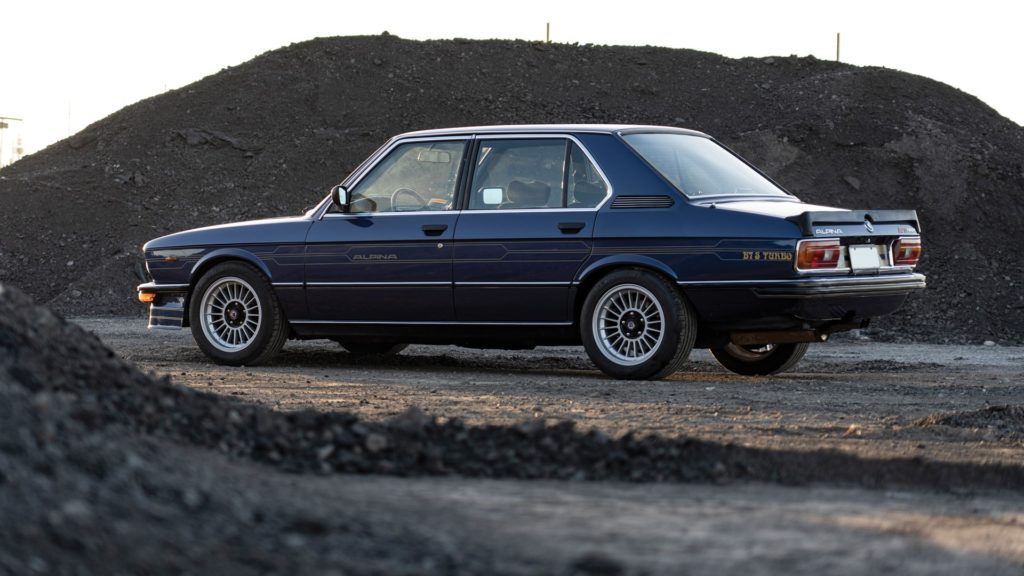
While BMW models in the U.S. were just starting to see the light at the end of the thermal reactor tunnel, Alpina was reaching new heights in terms of engineered performance. Styled by Paul Bracq, with his signature, elegantly understated lines encapsulating the perfectly proportioned shape of the E12, it was the 528i which served as the basis for Alpina’s modifications. Instead of the 3.0-liter M30 six used in the first B7 Turbo though, the S model used a 3.5-liter unit, force-fed by a KKK K27 turbocharger pushing roughly 13 PSI. The combination netted output of 330 horsepower and 369 pound-feet of torque.
That’s as much torque as the E39 would come with the better part of two decades later. To cope with immense amount of twist, the standard Getrag five-speed was replaced with the ZF unit that had been developed for 745i, BMW’s own turbocharged model being sold at the time. Other supporting modifications and equipment changes include the use of Bilstein dampers and special springs, along with adjustable sway bars front and rear. Ventilated brakes are also present, and wheels and tires were large and wide for their time at sixteen inches wide and with a rear section of 225, respectively.
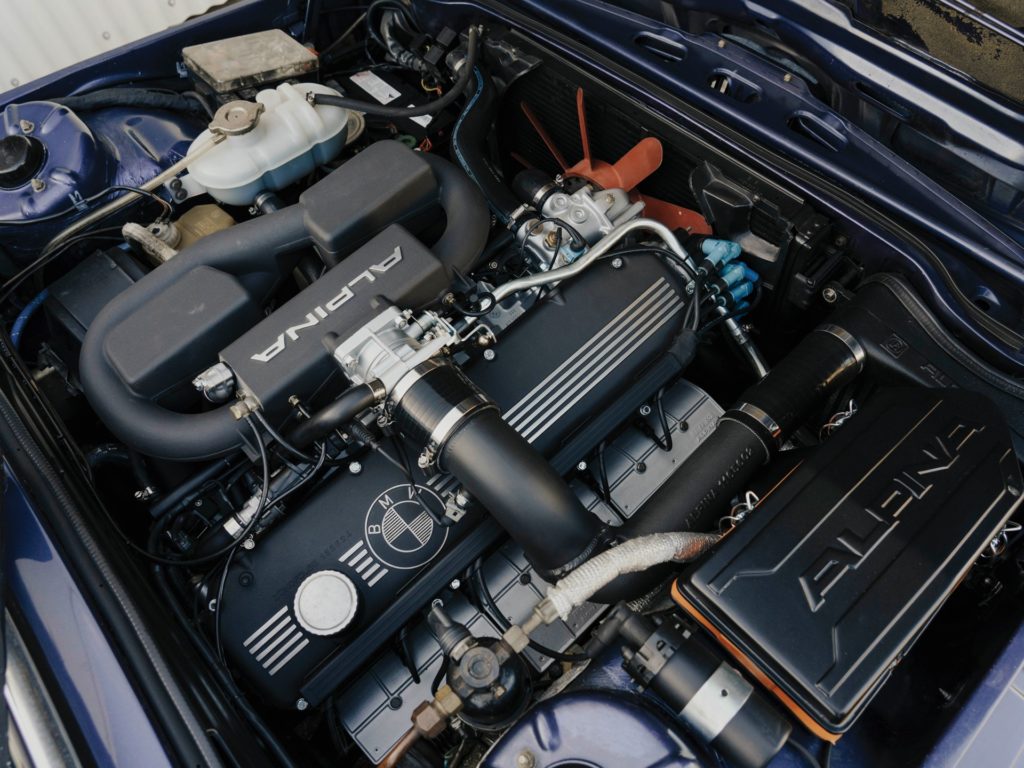
The interior contains the typical Alpina changes for the period, like Recaro seats covered in plush fabric with an Alpina-themed pattern, and a gauge pod mounted in the letter storage portion of the dash. A four-spoke Alpina steering wheel is present as well, along with the rather eye-catching Pioneer KEX 70 or 73 cassette deck in the enter stack. The vintage head unit is paired with a set of period Bose speakers, and the signature fabric is continued in the rear. Speaking of the back, virtually no other cars of the period offered seating for four (five if you needed it) coupled with such performance capability.

The Dark Sapphire Blue metallic Alpina B7 Turbo S offered here (VIN WBACJ710XB6579934) is scheduled to cross RM Sotheby’s auction block in Paris, France, next month. First delivered new in Japan via the country’s national distributor, this Alpina is the seventeenth of 60 produced, and has had three owners since new. The equivalent of 74,000 miles have been covered from delivery, and both current service invoices and maintenance records dating back to 1991 are included. The sale estimate is guided between $145,000 and $200,000.
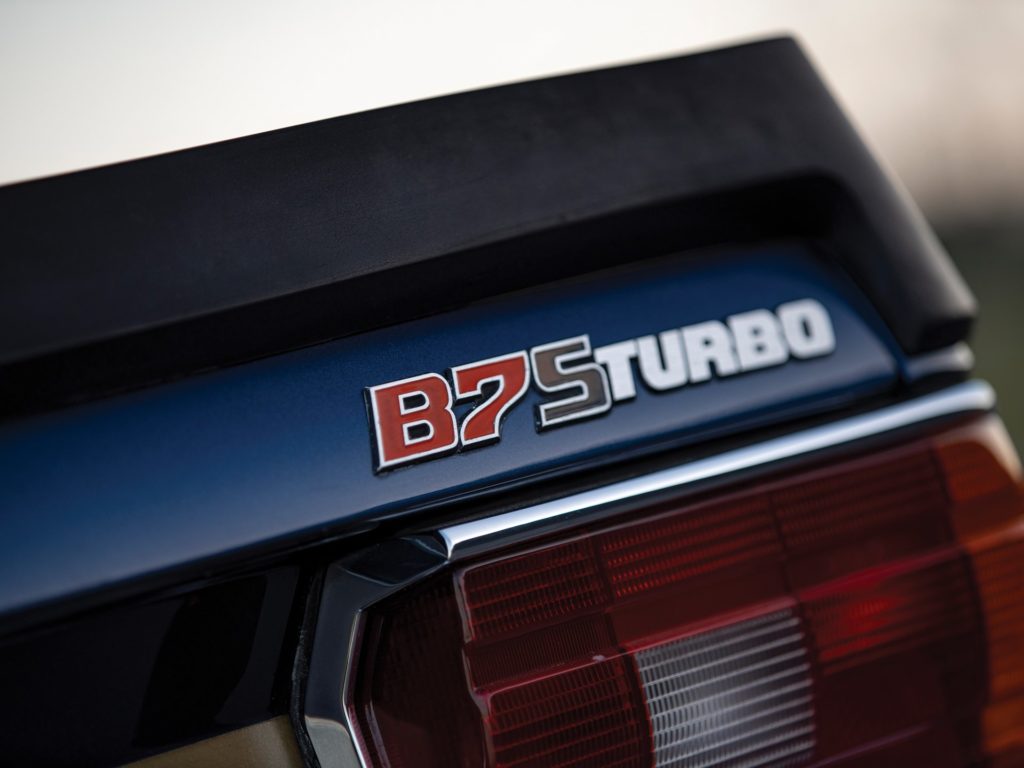
But what if you’re looking for something a bit less…ministerial? Alpina had its clientele covered no matter their tastes, and after production of 60 E12-based B7 Turbo S sedans concluded, they were succeeded by the Alpina B7 S Turbo Coupé. Based on the E24 6 Series which used E12 underpinnings during this time, carrying things over to the two-door grand tourer only made sense.
Underpinnings and the powertrain were identical to the sedan, meaning the E24 Alpina B7 S Turbo Coupe makes do with the same 330 horsepower and 369 pound-feet of torque. The big coupe actually ended up being a bit faster than the E12 though, with acceleration time dropping by roughly have a second. Top speed when new was the same between the two; approximately 160 mph.

Finished in Alpina Green with elegantly contrasting gold stripes, this E24-based Alpina looks stern and imposing, but wears an overarching shape that is markedly less studious in how it goes about its business. While the E12 fills the roll of an executive midsize sedan almost perfectly, the E24 looks like it’s ready for a long weekend touring the Cote d’Azur. Captured in the rain, the exterior of this B7 coupe exhibits what looks like strong fit and finish, while the green theme is continued inside the cabin, with green plaid fabric lining the seats, but not the door panels. A period Blaupunkt tape deck remains mounted in the dash, while both the steering wheel and shift knob are Alpina items.
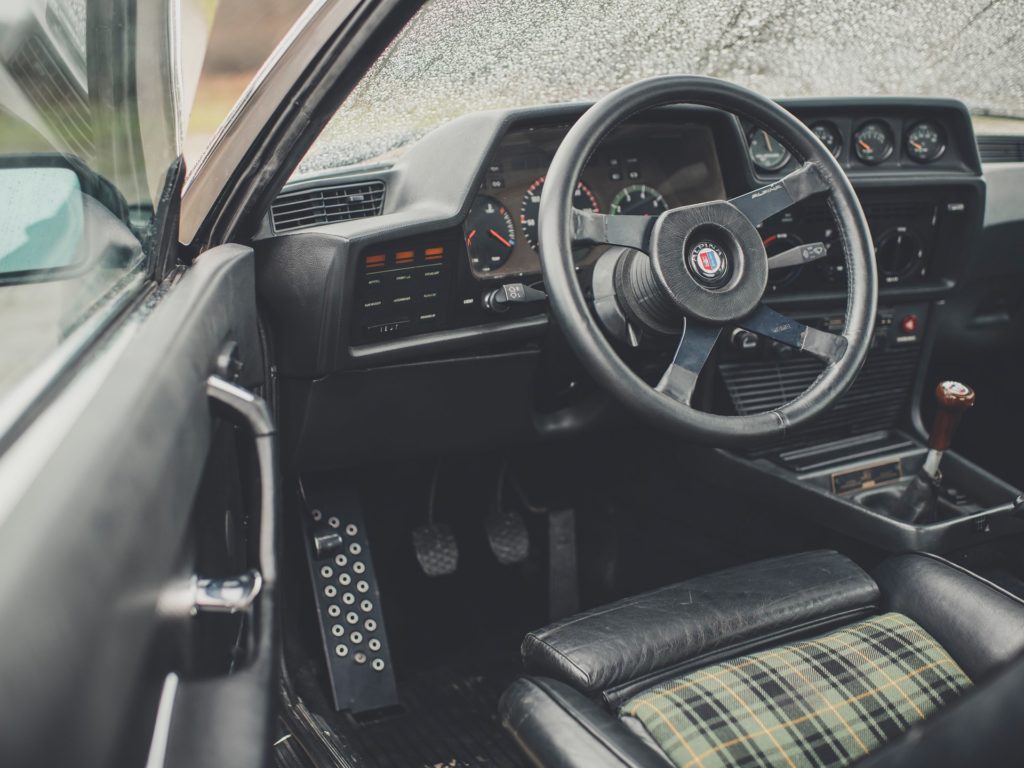
The eleventh of 30 Alpina B7 S Turbo coupes built, this green example (VIN WBAEC3101C5593059) is sold with extensive records and documentation, along with an Alpina certificate. First delivered to a client in Germany, this B7 would actually spend the majority of its life in Japan. In 2016 it was exported to the United Arab Emirates, where it received a bare-metal respray, a process that revealed a body and chassis that were completely free of rust and prior accident damage. As part of these restoration efforts, the owner had the car shipped to the U.K. where marque specialists at Munich Legends oversaw mechanical revitalization and detailing, along with road testing and tuning.
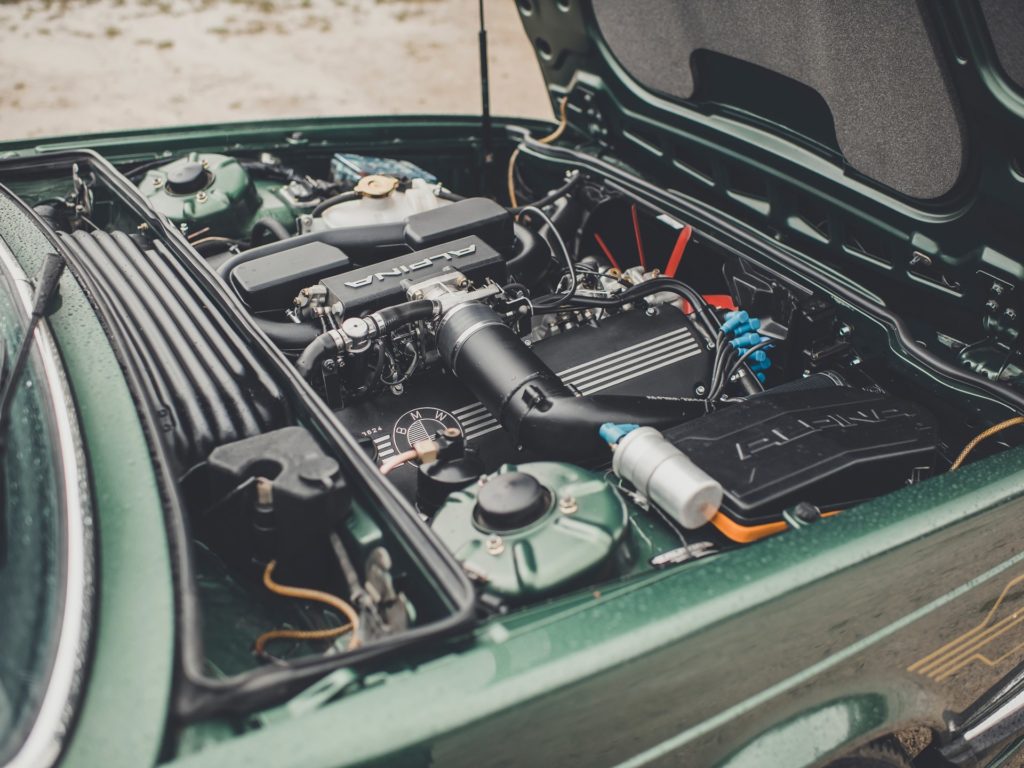
Like the E12 above, this Alpina E24 is described as turn-key and ready to be enjoyed. With no more than 30 made in total though, the sale estimate for this one is guided a bit higher, between $195,000 and $250,000.
If you’re keeping track of valuations, that’s more than just about any M car BMW ever made, with the exception of a M1, or a low-mileage, celebrity-owned E36 M3 LTW. These vintage Alpinas are truly special cars that helped to reorient the performance hierarchy when they were new, and it’s an incredibly rare sight to see not one, but two limited edition examples like this at auction. We’ll be interested to see what they sell for.—Alex Tock
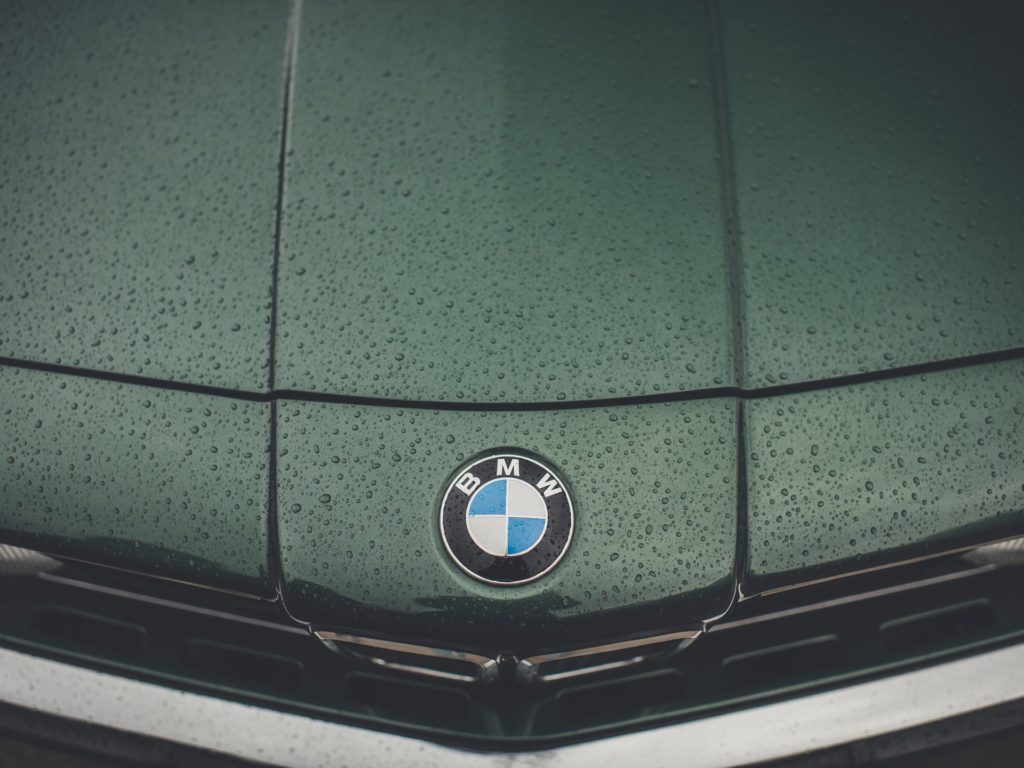
[Photos via RM Sotheby’s.]







